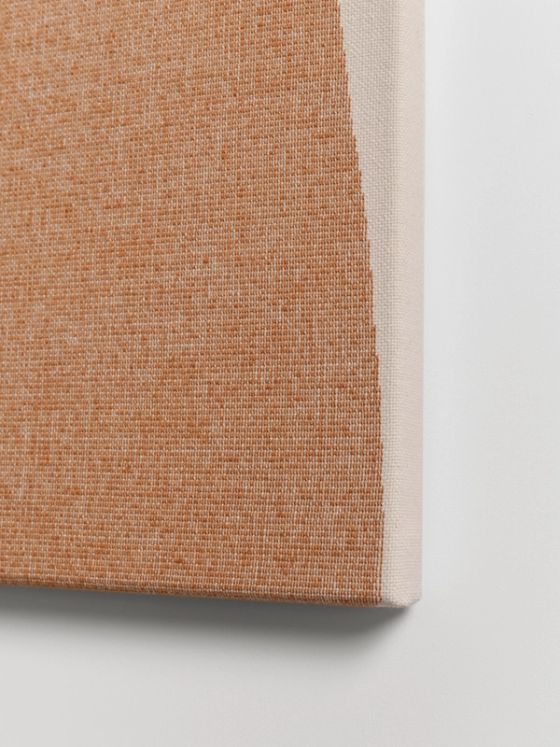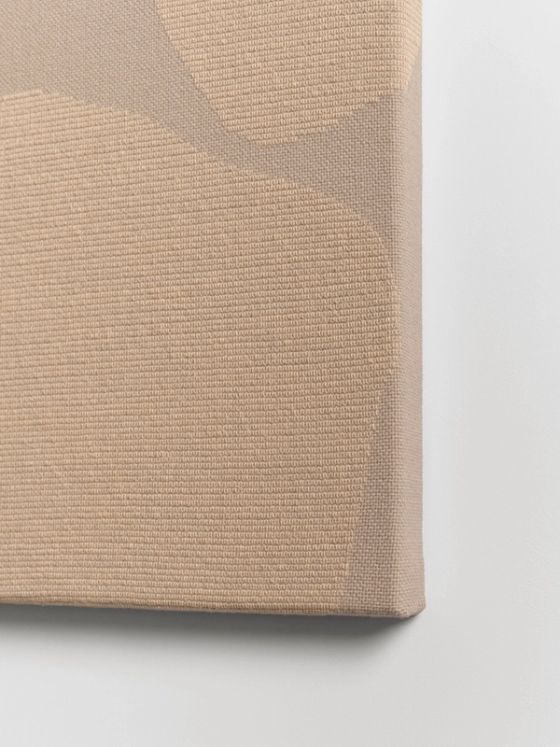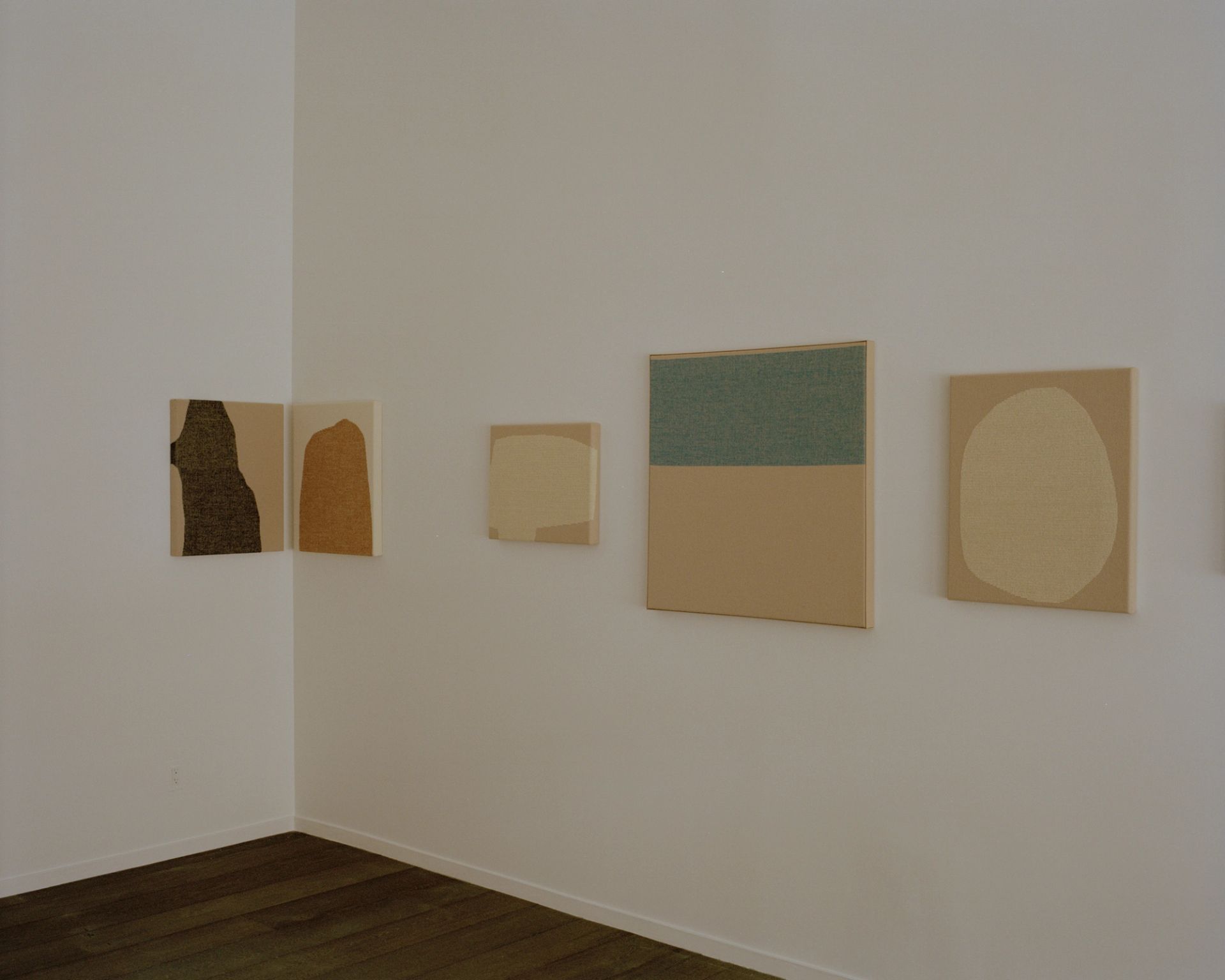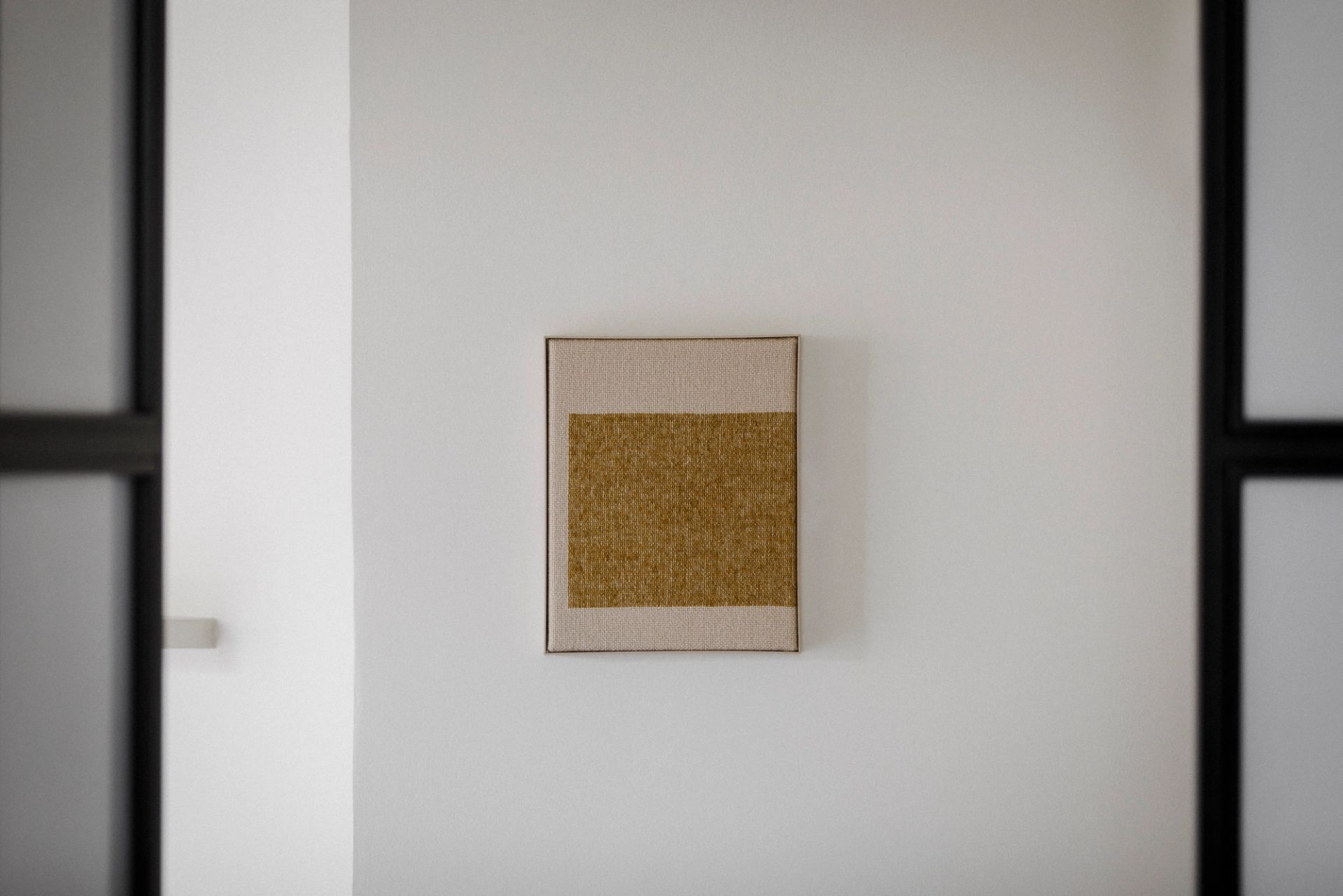Chris Liljenberg Halstrøm
Chris Liljenberg Halstrøm is a textile artist who lives and works between Copenhagen and the woods of Småland in Sweden. On close inspection, the surfaces of her delicate hand-embroidered pieces are subtly textured and rhythmic, and are often composed in monochrome or two-tone to draw attention to this quality. “Large monochrome surfaces allow the eye to notice the unevenness of the thread and the weave,” says Halstrøm. “Throughout the process of making, I see patterns form, only for them to disappear and be replaced with others as more of the work is completed.”
Halstrøm studied art and carpentry in Stockholm and received an MA in furniture design from the Royal Academy of Design in Copenhagen. She opened her highly regarded furniture design studio in Copenhagen in 2007, and in 2019, at the height of her success, decided to focus on her art practice. “What I have always enjoyed about designing furniture is creating something that will become an aesthetic part of a person’s everyday life,” she says. “But with time, working as a designer also meant many compromises. The urge to gain total control over the process became more and more necessary for me. While my hands work on embroidery, I have the best conditions for thinking. It is a flow state I can get in and out of very quickly. This is the kind of uncompromising way of working I can pursue with my art, which gives me a feeling of relevance and freedom.”
Halstrøm’s work, which has been shown at the MAK Center for Art and Architecture in LA, tends towards square and rectangular compositions – what she describes as an “anthropocene shape”. “The square is not a shape that occurs in nature; it suggests a human-made space,” she says. “From afar, the embroideries appear as solid shapes – single entities – but when the viewer gets closer, the individual stitches emerge. The technique of embroidery is so often obscured by the pattern it is creating. I am interested in the stitches themselves, examining how in their simplest form, they can reach a completely different level of expression. They are both dissolved and enhanced.”
There is an intrinsic connection to the passage of time in Halstrøm’s work. Her laborious stitches force the viewer to pause, and to pore over the work’s surface. “I feel that my final pieces reflect a sense of time and an anonymous presence of effort,” she says. “There are no short cuts. On the one hand, you are reminded that someone must have made all these stitches by hand, and of the time this must have taken. But at the same time, the rectangular shapes are anonymous; the person behind the hand’s work is not present. I am not trying to make a certain narrative or image that the viewer needs to interpret. Instead, I am interested in evoking emotions, and exploring how the non-objective can often make the most contemplative of objects.”
While my hands work on embroidery, I have the best conditions for thinking. It is a flow state I can get in and out of very quickly. This is the kind of uncompromising way of working I can pursue with my art, which gives me a feeling of relevance and freedom.

Featured works

 LA Gallery
LA GalleryChris Liljenberg HalstrømSalt, 2024





 LA Gallery
LA GalleryChris Liljenberg HalstrømRock, 2024



 LA Gallery
LA GalleryChris Liljenberg HalstrømHills I, 2024



 LA Gallery
LA GalleryChris Liljenberg HalstrømSky, 2024
Related
- 08.11.21
Gallery Representation of Chris Liljenberg Halstrøm
Read moreChris Liljenberg Halstrøm is a textile artist who lives and works between Copenhagen and the woods of Småland in Sweden. On close inspection, the surfaces of her delicate hand-embroidered pieces are subtly textured and rhythmic, and are often composed in monochrome or two-tone to draw attention to this quality. “Large monochrome surfaces allow the eye to notice the unevenness of the thread and the weave, creating a flickering effect across each stitch,” says Halstrøm. “Throughout the process of making, I see patterns form, only for them to disappear and be replaced with others as more of the work is completed.”






